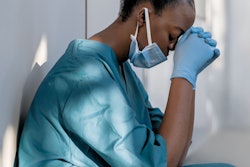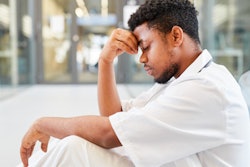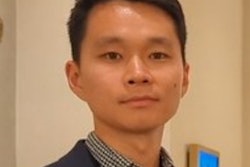
Medical students from groups that are underrepresented in medicine have a higher risk of exhaustion-related burnout, but educators can help with this issue, research published February 23 in JAMA Network Open says.
The survey study led by Jamieson O'Marr from Yale University also indicated that these students have "marginally less favorable" interactions with faculty members in the learning environment.
"This burnout is likely multifactorial and could represent a resiliency or survival bias, the burden of increased responsibility, and/or recurrent discrimination," O'Marr and colleagues wrote.
Burnout from exhaustion is common among medical students and professionals, and it can have a negative effect on the emotional and psychological wellbeing of caregivers, to the point where they impact patient care. Previous research suggests that burnout is experienced by up to 50% of medical students. A 2018 Medscape report, meanwhile, indicated that radiologists have among the highest burnout rates, with 47% of respondents reporting at least one symptom of burnout.
Mistreatment and socioeconomic factors have been investigated as contributors to burnout. More recent research has focused on burnout experienced by students from groups that are underrepresented in medicine. These include students who identify as Alaska Native, Black, Hispanic/Latinx, Native American, and/or Pacific Islander.
O'Marr et al wanted to find out how the medical school learning environment contributes to burnout among these students compared to students who are not of underrepresented populations. This included looking at social, mental, and physical spaces for medical students.
Out of the 26,567 students who responded to the team's survey, 3,947 identified as underrepresented in medicine.
| Burnout scores for medical students underrepresented in medicine vs. students who are not underrepresented | |||
| Represented students | Underrepresented students | p-value | |
| Overall burnout | 20.84 | 21.08 | 0.03 |
| Exhaustion-related burnout | 11.48 | 11.84 | 0.001 |
| Disengagement-related burnout | 9.36 | 9.24 | 0.047 |
Students from groups that are underrepresented in medicine also reported less favorable student-faculty interactions in the learning environment with an average score of 14.09. Students who are represented, meanwhile, reported an average score of 14.29 (p < .001).
The team also found that students who faced at least one episode of discrimination reported scores in the bottom quartile for learning environment and were more likely to have higher burnout rates.
The researchers wrote that reducing discrimination, as well as identifying and addressing relevant learning environment components, must be prioritized to prevent burnout in these medical students.
"Educators, such as radiologists, should support active institutional level actions," O'Marr said. "Additionally, practicing physicians, because of their leadership positions in the medical hierarchy, are likely to be in the best positions to affect change in both the classroom and hospital-based learning environments."
Some actions that O'Marr said could be taken include financial and staff support for identity-aligned groups, as well as expanding the number of medical faculty from underrepresented groups to serve as mentors and role models to students.
"Medical schools must also ensure that underrepresented-in-medicine faculty have the proper support to fulfill these roles, ensuring that the overall training environment can better support students from all backgrounds," he added.
Dr. Emily Conant, president of the Society of Breast Imaging board of directors, told AuntMinnie.com what is needed, particularly for mental healthcare, is addressing the ability and the perceptions surrounding access to support.
"As this important study demonstrates, burnout is multifactorial and we need to ensure a learning environment for our next generation of physicians, especially our underrepresented in medicine students, that limits discrimination and exhaustion-related burnout," she said.




















